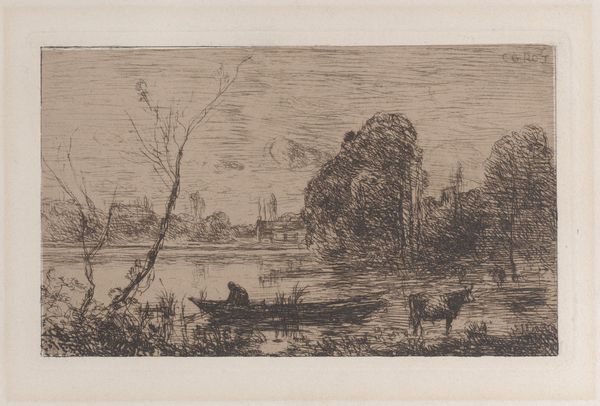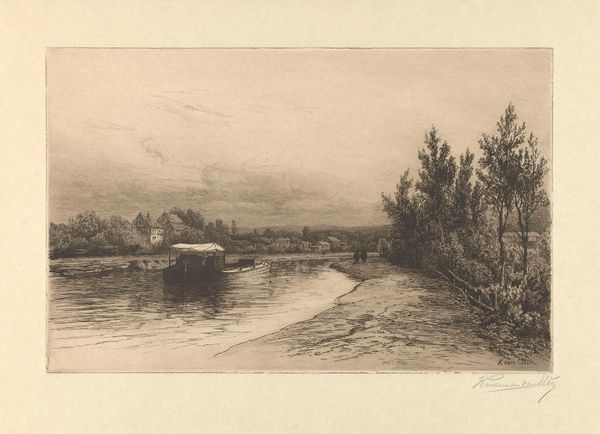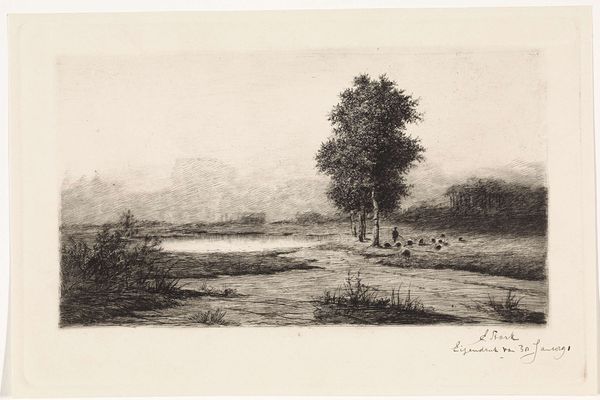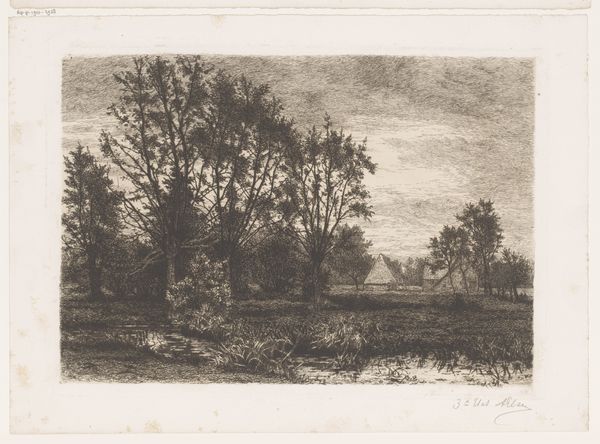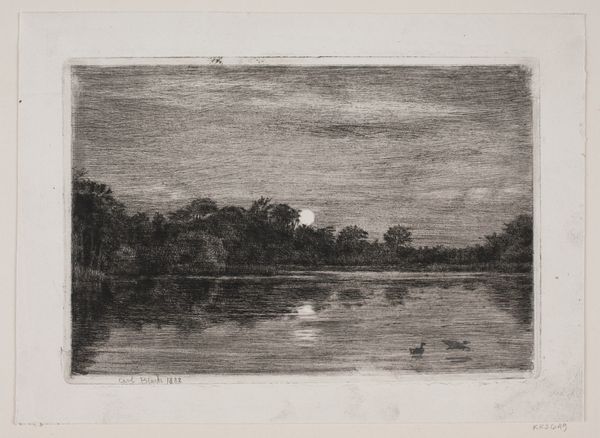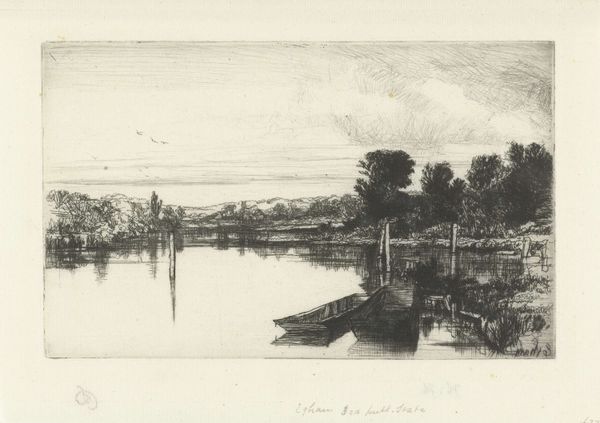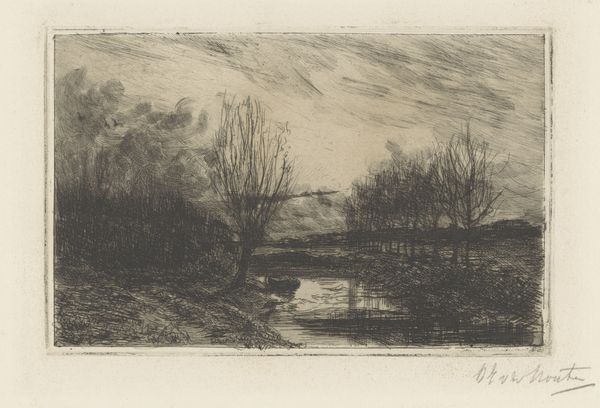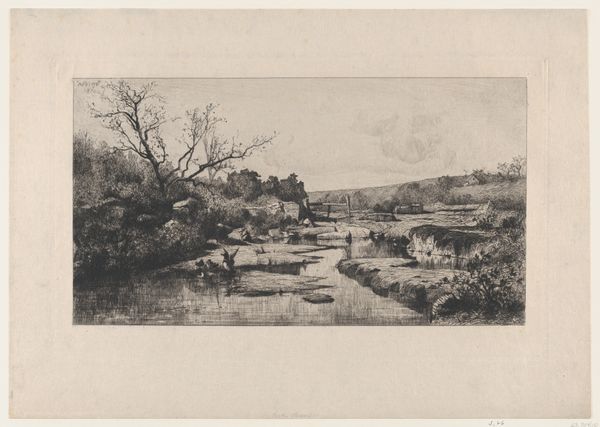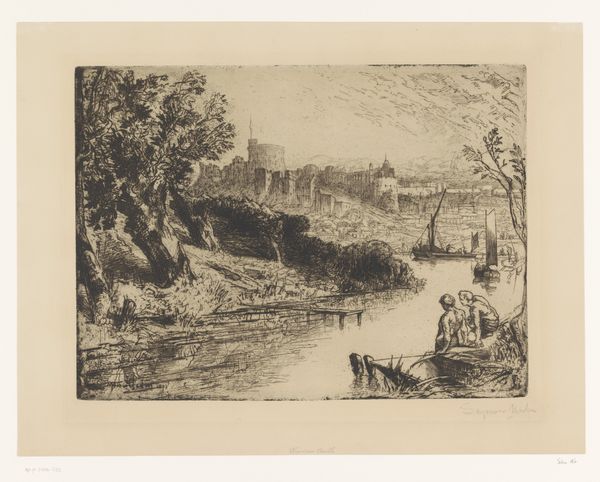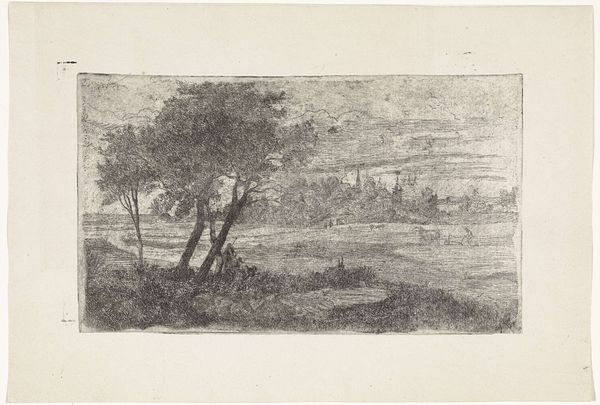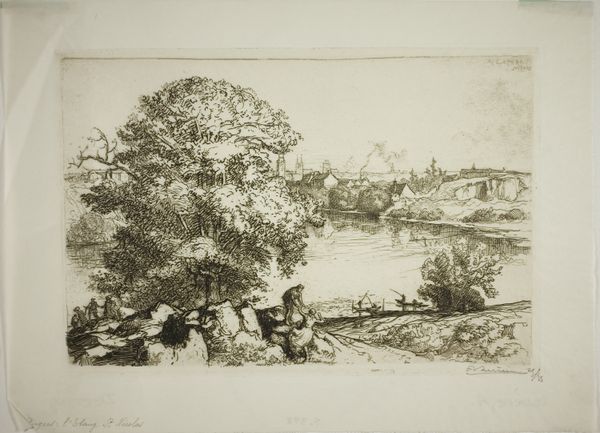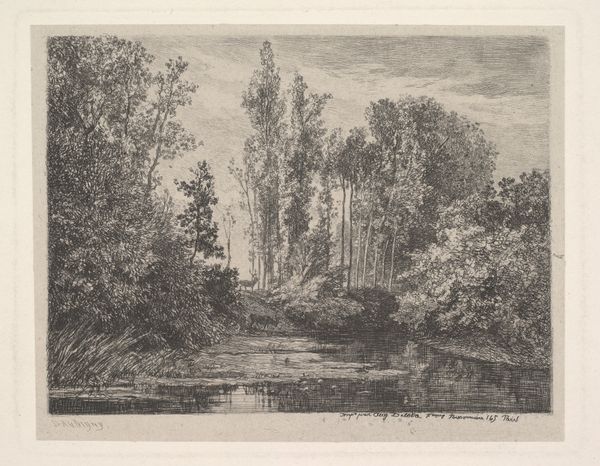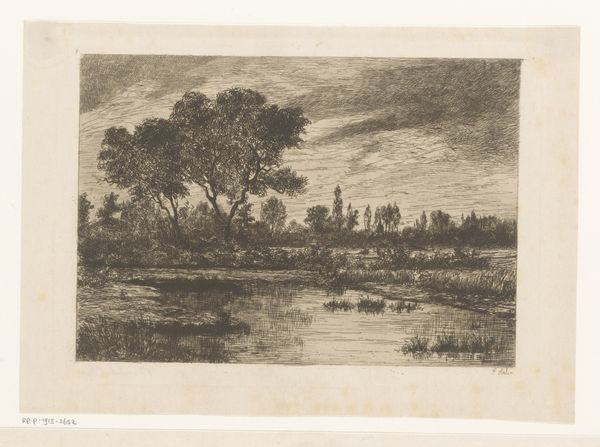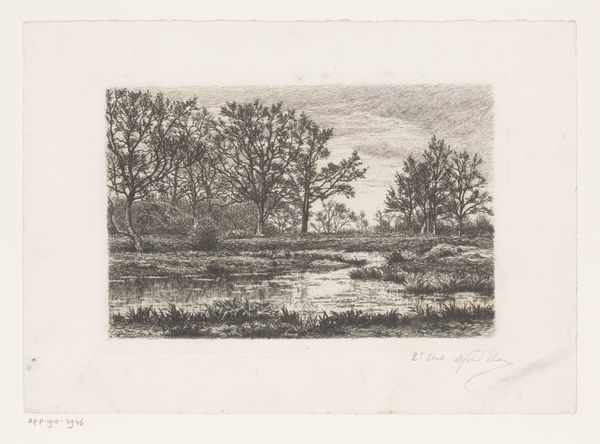
Dimensions: height 150 mm, width 226 mm
Copyright: Rijks Museum: Open Domain
Sir Francis Seymour Haden made ‘De rivier de Test’ using the intaglio printmaking method known as etching. The artist covers a metal plate with a waxy, acid-resistant substance called a ground, and then draws on the ground with a needle. The plate is then immersed in acid, which bites into the metal wherever it has been exposed. The nature of the materials influences the appearance of the finished print. Because the etcher has to work through a resistant ground, the lines tend to be more fluid than in other intaglio processes like engraving. Also, the length of time that a plate is left in the acid bath is crucial. More time means darker lines. The artist carefully controls the tonal range. Haden, who was a surgeon by profession, was a leading figure in the etching revival of the late 19th century. His artistic practice belongs to a larger history of printmaking, which has always provided artists with a means of circulating their images widely. The beauty of printmaking lies in its reproducible quality, a process deeply tied to wider social issues of labor, politics, and consumption. We can better understand the full meaning of an artwork by emphasizing the importance of materials, making, and context.
Comments
No comments
Be the first to comment and join the conversation on the ultimate creative platform.
